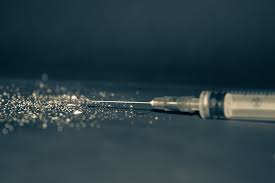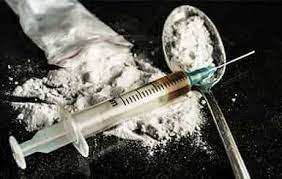Uncategorized
Understanding Phencyclidine (PCP): A Comprehensive Guide
Phencyclidine, commonly known as PCP, is a synthetic drug that has garnered significant attention due to its potent effects and controversial history. Originally developed as an anesthetic, PCP has since become infamous as a recreational drug with powerful and often dangerous psychoactive properties. This article delves into the intricacies of phencyclidine, exploring its origins, effects, risks, and the broader implications of its use.

What is Phencyclidine (PCP)?
Phencyclidine (PCP) is a dissociative anesthetic that was first synthesized in the 1950s by Parke-Davis, a pharmaceutical company. It was initially developed for use as an intravenous anesthetic under the brand name Sernyl. However, due to its severe side effects, including hallucinations, agitation, and delirium, its medical use was discontinued in humans in the 1960s. Despite this, PCP continued to be used as a veterinary anesthetic for a short period.
Chemically, PCP is classified as an arylcyclohexylamine, which is a class of dissociative anesthetics that includes other compounds like ketamine. PCP works primarily by blocking the NMDA receptor in the brain, which is involved in pain perception, memory, and learning. This blockade leads to the drug’s characteristic dissociative effects, which can include feelings of detachment from reality and self.
PCP Meaning and Street Names
PCP is commonly referred to by a variety of street names, reflecting its presence in popular culture and its illicit use. Some of the most common street names for PCP include:
- Angel Dust
- Rocket Fuel
- Embalming Fluid
- Ozone
- Wack
- Hog
These names often hint at the drug’s intense effects and its reputation for causing unpredictable and sometimes violent behavior.
What Are Phencyclidine’s Effects?
PCP is known for its wide range of effects, which can vary significantly depending on the dose, method of administration, and individual factors such as the user’s mental state and environment. The effects of PCP can be both physical and psychological, and they often include:
- Euphoria and Relaxation: At lower doses, PCP can produce feelings of euphoria, relaxation, and a sense of well-being. Users may feel detached from their surroundings and experience a dreamlike state.
- Hallucinations and Delusions: As the dose increases, PCP can cause hallucinations and delusions. These can be visual, auditory, or tactile, and they often lead to a distorted sense of reality.
- Dissociation: One of the hallmark effects of PCP is dissociation, where users feel a separation between their mind and body. This can result in an out-of-body experience, where individuals perceive themselves as observing their own actions from a distance.
- Agitation and Aggression: PCP is notorious for causing agitation, aggression, and violent behavior. Users may become paranoid, delusional, and exhibit unpredictable actions, posing a danger to themselves and others.
- Numbness and Analgesia: PCP has potent anesthetic properties, leading to numbness and loss of pain sensation. This can result in users injuring themselves without realizing it.
- Impaired Motor Skills: The drug can cause severe motor impairment, including unsteady gait, loss of coordination, and difficulty speaking. These effects are often compared to severe alcohol intoxication.
- Memory and Cognitive Deficits: Chronic use of PCP can lead to long-term cognitive deficits, including memory problems, impaired concentration, and difficulties with learning.

Methods of Administration
PCP can be administered in various ways, each influencing the onset and intensity of its effects. Common methods of administration include:
- Smoking: PCP is often smoked, either by itself or mixed with other substances such as tobacco or marijuana. When smoked, the effects of PCP can be felt within minutes and peak within 15-30 minutes.
- Ingestion: PCP can be ingested orally in pill, tablet, or liquid form. When taken this way, the onset of effects is slower, typically within 30-60 minutes, but the duration of the high can be longer.
- Snorting: Some users snort PCP in its powder form. This method leads to rapid absorption through the nasal mucosa, with effects felt within a few minutes.
- Injection: Although less common, PCP can be injected intravenously or intramuscularly. This route provides an almost immediate onset of effects, making it highly risky due to the potential for overdose.
The Risks and Dangers of PCP Use
The use of PCP carries significant risks, both in the short term and long term. The unpredictable nature of its effects, combined with its potential for addiction, makes it a particularly dangerous drug.
- Acute Psychological Effects: The intense hallucinations and delusions caused by PCP can lead to dangerous behaviors, including self-harm and violence. Users may become paranoid and exhibit extreme agitation, making them a danger to themselves and others.
- Physical Health Risks: PCP’s anesthetic properties can result in severe physical harm. Users may injure themselves without feeling pain, leading to untreated injuries and complications. Additionally, high doses of PCP can cause seizures, coma, and death.
- Addiction and Dependence: PCP is highly addictive, and regular use can lead to physical and psychological dependence. Users may develop a tolerance, requiring higher doses to achieve the same effects, and experience withdrawal symptoms when not using the drug.
- Long-Term Cognitive Impairment: Chronic use of PCP can lead to lasting cognitive deficits, including memory loss, impaired concentration, and difficulties with learning. These effects can persist long after cessation of use.
- Legal Consequences: PCP is classified as a Schedule II controlled substance in the United States, meaning it has a high potential for abuse and is illegal to manufacture, distribute, or possess without a prescription. Conviction for PCP-related offenses can result in severe legal penalties.
Historical Context and Cultural Impact
The history of PCP is marked by its transition from a medical anesthetic to a widely abused recreational drug. In the 1960s and 1970s, PCP emerged as a popular drug in the counterculture movement, particularly among certain subcultures seeking mind-altering experiences. Its use was glamorized in music and media, contributing to its widespread popularity.
However, the drug’s reputation quickly shifted as reports of violent and erratic behavior associated with PCP use became more prevalent. By the 1980s, PCP was widely recognized as a dangerous substance, leading to increased law enforcement efforts to curb its distribution and use.
Despite these efforts, PCP remains available on the illicit drug market, often marketed under deceptive names to attract unsuspecting users. Its unpredictable effects and potential for severe harm continue to make it a significant public health concern.
Treatment and Recovery

For individuals struggling with PCP addiction, professional treatment and support are crucial. Treatment typically involves a combination of behavioral therapies, counseling, and, in some cases, medication to manage withdrawal symptoms and underlying mental health conditions.
- Detoxification: The first step in treating PCP addiction is detoxification, where the body is cleared of the drug. This process should be conducted under medical supervision due to the potential for severe withdrawal symptoms.
- Behavioral Therapy: Behavioral therapies, such as cognitive-behavioral therapy (CBT) and contingency management, are effective in helping individuals address the psychological aspects of addiction. These therapies focus on changing negative thought patterns and behaviors associated with drug use.
- Support Groups: Participation in support groups, such as Narcotics Anonymous (NA), can provide individuals with a sense of community and accountability. Sharing experiences with others who have faced similar challenges can be a valuable source of encouragement and motivation.
- Medication: While there are no specific medications approved for treating PCP addiction, medications may be prescribed to address co-occurring mental health conditions, such as depression or anxiety, which can complicate recovery.
- Aftercare and Relapse Prevention: Long-term recovery from PCP addiction requires ongoing support and relapse prevention strategies. Aftercare programs, including continued therapy and support group participation, can help individuals maintain sobriety and navigate the challenges of life without drugs.
Conclusion
Phencyclidine (PCP) is a powerful and dangerous drug with a complex history and a wide range of effects. While it was initially developed for medical use, its severe side effects and potential for abuse have led to its classification as an illicit substance. The unpredictable nature of PCP’s effects, combined with its potential for addiction and long-term cognitive impairment, make it a significant public health concern.
Understanding the risks associated with PCP use is crucial for both individuals and society at large. Education, prevention, and effective treatment are essential in addressing the challenges posed by this potent drug. By raising awareness and providing support for those affected by PCP addiction, we can work towards reducing the harm caused by this dangerous substance.
